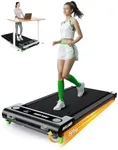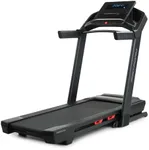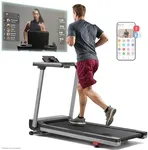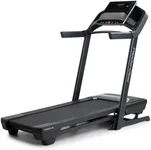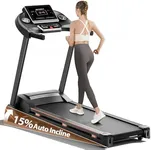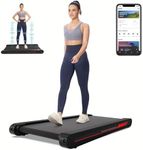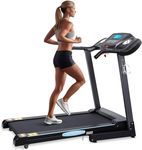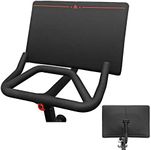Buying Guide for the Best Walking Treadmill
Choosing the right walking treadmill can significantly enhance your fitness routine and overall health. When selecting a treadmill, it's important to consider various specifications that will impact your experience and ensure the treadmill meets your specific needs. Understanding these key specs will help you make an informed decision and find the best fit for your walking goals.Motor PowerMotor power, measured in horsepower (HP), determines the treadmill's ability to handle different speeds and user weights. For walking, a motor with 1.5 to 2.5 HP is generally sufficient. If you plan to use the treadmill for light walking, a lower HP motor will suffice. However, if you are a heavier user or plan to walk for extended periods, opting for a motor closer to 2.5 HP will ensure smoother and more reliable performance.
Belt SizeThe belt size refers to the length and width of the treadmill's walking surface. A standard belt size for walking treadmills is around 20 inches wide and 50-55 inches long. A wider and longer belt provides more comfort and space, especially for taller individuals or those with a longer stride. If you have limited space or are of average height, a smaller belt size may be adequate. Consider your walking style and available space when choosing the belt size.
Speed RangeThe speed range of a treadmill indicates how fast the belt can move. For walking treadmills, a speed range of 0.5 to 4 mph is typically sufficient. If you plan to use the treadmill for brisk walking or light jogging, look for a model that can reach up to 6 mph. Assess your fitness goals and walking pace to determine the appropriate speed range for your needs.
Incline OptionsIncline options allow you to adjust the walking surface's angle, simulating uphill walking and increasing workout intensity. Walking treadmills often offer incline levels from 0% to 10%. If you want to add variety and challenge to your workouts, choose a treadmill with multiple incline settings. For those with joint issues or who prefer a flat surface, a treadmill with minimal or no incline options may be more suitable.
CushioningCushioning refers to the treadmill's ability to absorb impact and reduce stress on your joints. Good cushioning is essential for a comfortable walking experience, especially if you have joint problems or plan to use the treadmill frequently. Look for treadmills with adjustable cushioning systems or those specifically designed to provide extra shock absorption. If joint comfort is a priority, prioritize models with superior cushioning features.
Console FeaturesThe console features include the display and controls on the treadmill. Basic models may offer simple displays showing speed, time, distance, and calories burned. More advanced models can include heart rate monitors, preset workout programs, and connectivity options like Bluetooth or app integration. Consider what features are important to you, such as tracking your progress or having guided workouts, and choose a treadmill with a console that meets your preferences.
Weight CapacityWeight capacity indicates the maximum user weight the treadmill can safely support. It's crucial to choose a treadmill with a weight capacity that exceeds your body weight to ensure durability and safety. Most walking treadmills have a weight capacity ranging from 250 to 350 pounds. If you are close to the upper limit, opt for a treadmill with a higher weight capacity to ensure reliable performance.
Portability and StoragePortability and storage features are important if you have limited space or need to move the treadmill frequently. Look for treadmills with foldable designs, transport wheels, and lightweight frames for easy storage and mobility. If you plan to keep the treadmill in a dedicated space, portability may be less of a concern. Assess your space and storage needs to determine the importance of these features.
